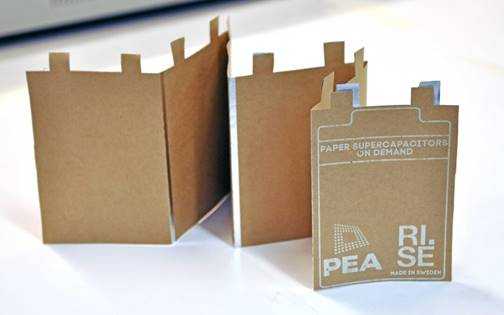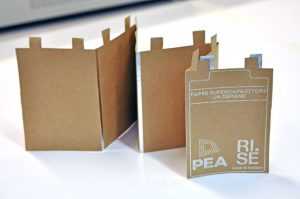

The active ingredient of the capacitor is a water-based ink made from the conductive polymer PEDOT:PSS and cellulose pulp obtained from soft wood, as well as some other ingredients, including activated carbon.
Previously, the Center used to print it using stencils on an aluminum-coated plastic substrate, but in this latest demonstration he switched to a commercial aluminum-coated paper substrate, making it a truly paper supercapacitor.
Aluminum acts as a current collector, as well as to exclude moisture and oxygen. Carbon layers printed on top of the metal protect it from corrosion inside the cell to extend its life.
In the demonstration, the capacitors were hand-fabricated using a multi-step process that mimicked a potential manufacturing process, culminating in heat-sealing printed substrates around electrolyte-impregnated fibers to complete the capacitors.
"The capacity of the paper supercapacitor is roughly equivalent to commercial supercapacitors when normalized to volume," said project leader Jesper Edberg. “One of the advantages of paper devices is the way they are made, which we think can lead to faster production. They are also thin, foldable and bendable, and can be integrated into new environments where commercial cylindrical metal supercapacitors are not suitable.”
Because they are based on the paper used in the constructions. - for warming saunas. "These energy storage devices can, for example, be built into the walls of buildings to locally store energy from solar panels on the roof, while also functioning as insulation for the building," said Robert Brook, a researcher at RISE (Research Institute of Sweden), who worked with Digital Cellulose Center.
The demonstration devices are physically designed to be easily connected in series for higher voltages, and to be split into four smaller supercapacitors (see photo).
"If you have a small electronic device that needs minimal power, then you can use a separate sheet of energy storage," said Brooke. "If you want to power something that needs more, you can connect devices or sheets to increase the voltage or capacity."
The device demonstrated a capacitance of up to 10F “while area expansion with a large parallel device increased the capacitance to a record 127.8F, which is 332.8mF/cm2,” according to the Center.
On self-discharge, the open-circuit voltage dropped from 800 mV to 500 mV within 24 hours, and an initial stability study showed little change in capacitance after 1000 charge-discharge cycles from 0 V to 800 mV. at 75 mA.
A higher voltage can be used, and four in series can be used at 5V, the Center said.
In a further demonstration, the paper supercapacitors were combined with a fully printed electrochromic exhibition showing the city of Norrkoping in an art installation called 'Norrkoping Starry Night'. It is charged by silicon solar cells and has a touch sensor to turn it on and off.
.
The work is published as '' in the Journal of Energy Storage, which is clearly written and can be read in its entirety without payment, and is .
Photo: devices connected in series.
Source: electronicsweekly.com










